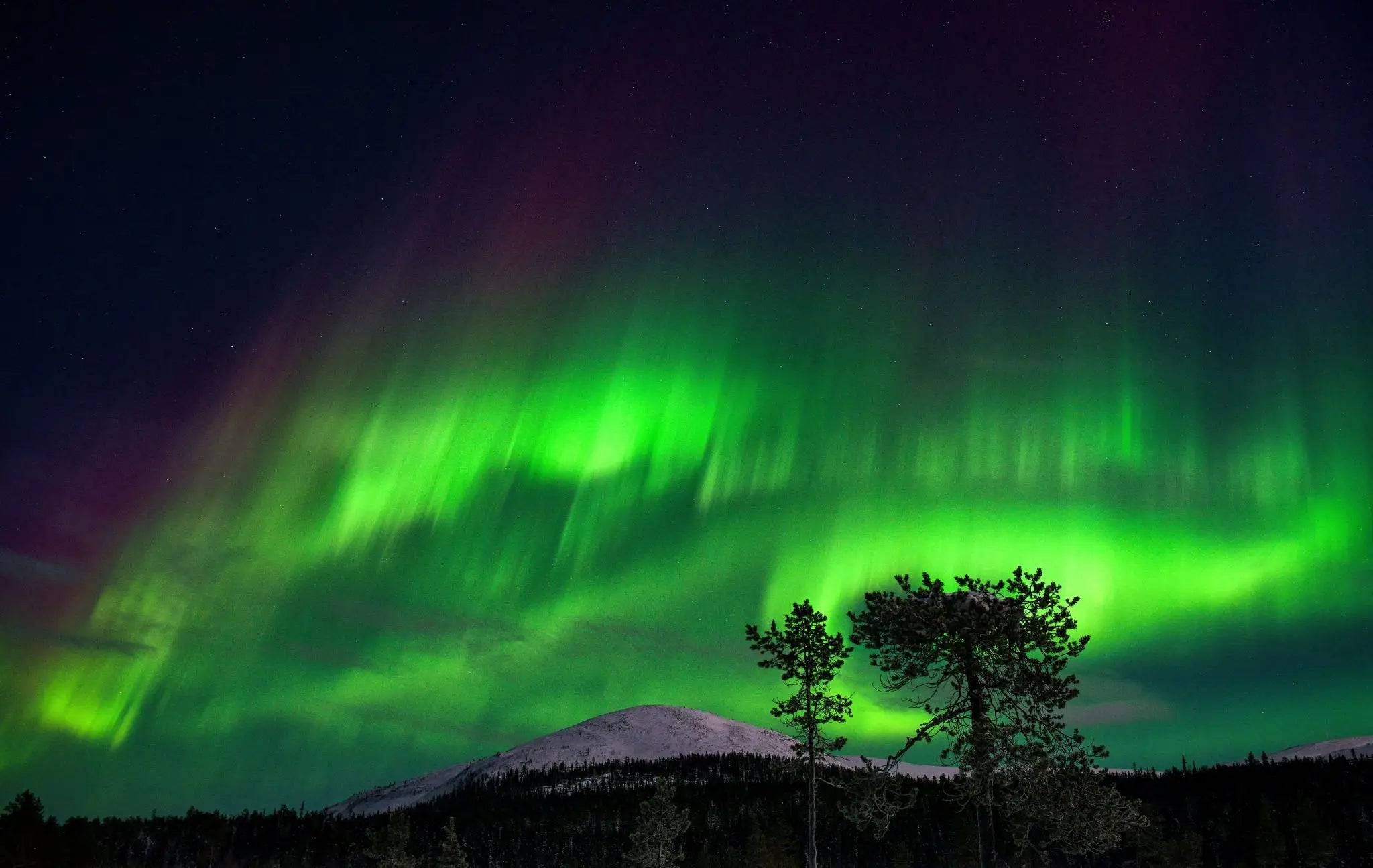Watch This When You're High - What Are The Northern Lights?
 IRENE STACHON. Getty Images.
IRENE STACHON. Getty Images.Space.com - The northern lights, or the aurora borealis, are beautiful dancing ribbons of light that have captivated people for millennia. But for all its beauty, this spectacular light show is a rather violent event.
The northern lights are created when energized particles from the sun slam into Earth's upper atmosphere at speeds of up to 45 million mph (72 million kph), but our planet's magnetic field protects us from the onslaught.
As Earth's magnetic field redirects the particles toward the poles — there are southern lights, too, which you can read about below — the dramatic process transforms into a cinematic atmospheric phenomenon that dazzles and fascinates scientists and skywatchers alike.
At any given moment, the sun is ejecting charged particles from its corona, or upper atmosphere, creating the solar wind. When that wind slams into Earth's ionosphere, or upper atmosphere, the aurora is born. In the Northern Hemisphere, the phenomenon is called the northern lights (aurora borealis), while in the Southern Hemisphere, it's called the southern lights (aurora australis).
The bright colors of the northern lights are dictated by the chemical composition of Earth's atmosphere.
"Every type of atom or molecule, whether it's atomic hydrogen or a molecule like carbon dioxide, absorbs and radiates its own unique set of colors, which is analogous to how every human being has a unique set of fingerprints," Teets told Space.com.
"Some of the dominant colors seen in aurorae are red, a hue produced by the nitrogen molecules, and green, which is produced by oxygen molecules." Teet continued.
The Northern Lights are all the rage right now. Some how, some way, they've even been visible in Chicago the last few nights. As anybody who's been to Chicago's Adler Planetarium can tell you, Chicago is one of the worst cities in the country in terms of light pollution, which makes seeing the stars and planets extremely difficult. So if the Northern Lights have looked as amazing as Barry Butler has captured over Lake Michigan this weekend, I can't even imagine how cool this must look in Wisconsin or Michigan.
The reason Chicago, and much of the United States is able to catch a glimpse now, according to the Sun Times, is because of the insane amount of electromagtivity in the atmosphere above us right now, due to electromagnetic storms and solar flares.
Chicago Sun Times - And for anyone who missed the dancing neons that shined Friday night into the wee hours of Saturday, don’t despair — they’re expected to be visible again, if not as vibrantly, through Sunday morning.The National Oceanic and Atmospheric
Administration predicted a slightly weaker display in the sky than on Friday night, with the strongest solar shows forecast between 7 and 10 p.m. Saturday and 3 a.m. to 6 a.m. Sunday.
Saturday night’s electromagnetic activity was expected to be “strongly severe,” perhaps even reaching Friday’s “extreme” levels, according to the NOAA. Nichols called Chicago’s first round of aurora “truly historic.”
“We just had the Super Bowl of solar eclipses,” Nichols said, adding that solar eclipse glasses can be used again to see the sunspot producing the solar storms on the right-hand edge of the sun. “What happened last night was the Super Bowl of space weather.”The phenomenon is only visible in the Chicago area every few decades, and the latest solar activity has powered one of “the best aural displays of the last 500 years,” Nichols said, with the lights being visible as far south as Puerto Rico, which last saw them about a century ago.
Here are a few good YouTube videos explaining how they occur.


